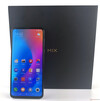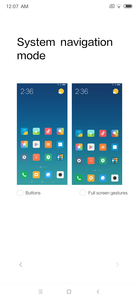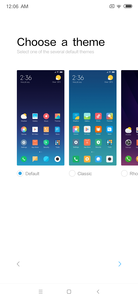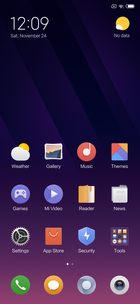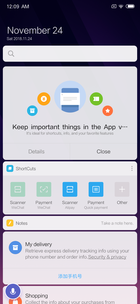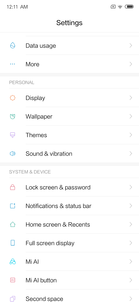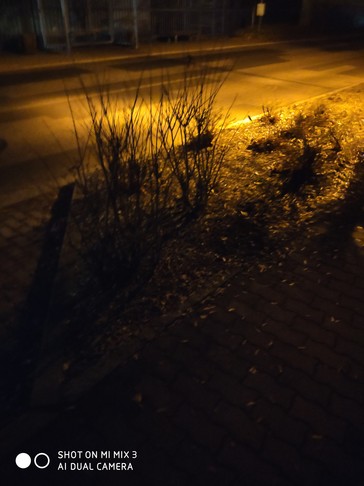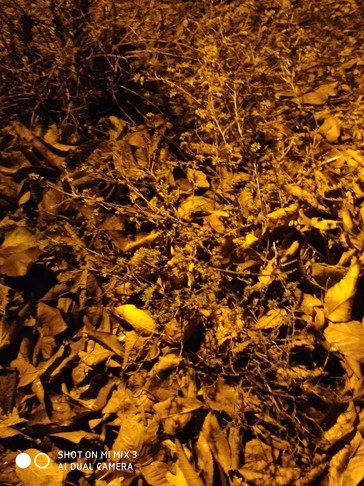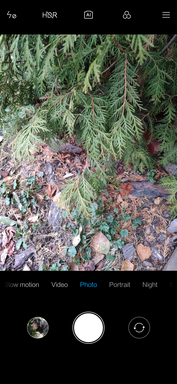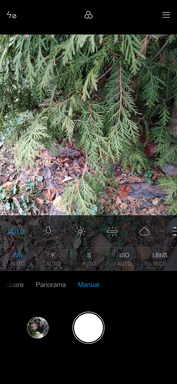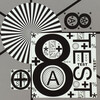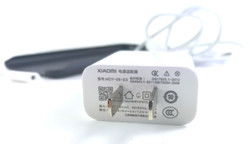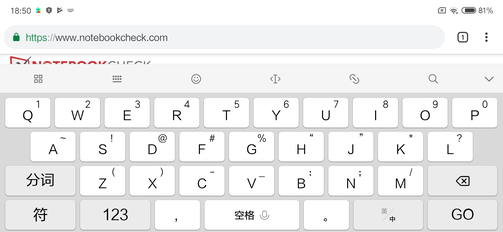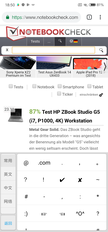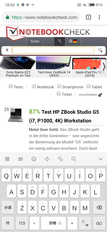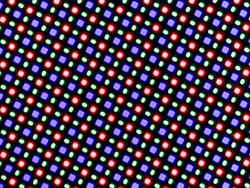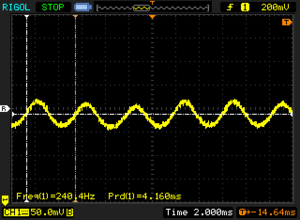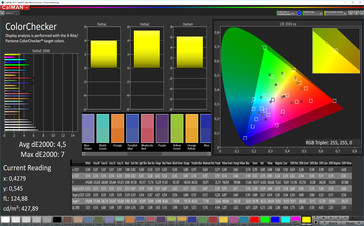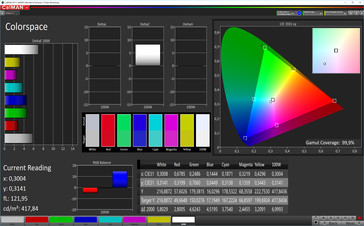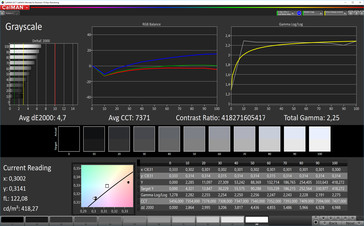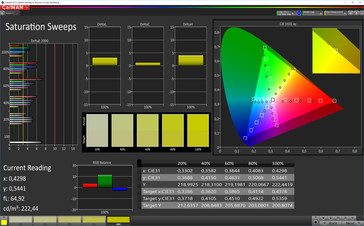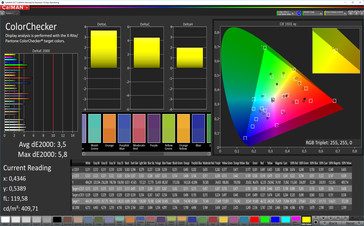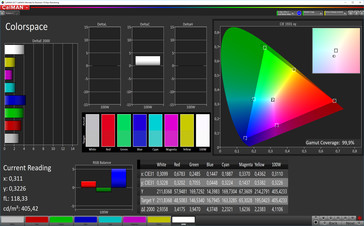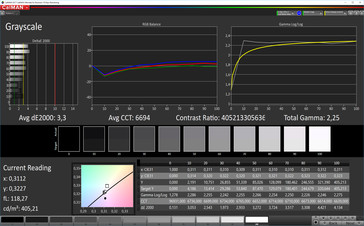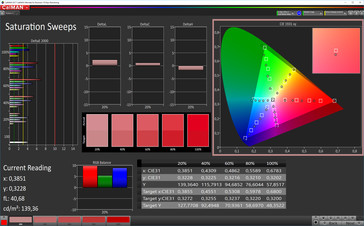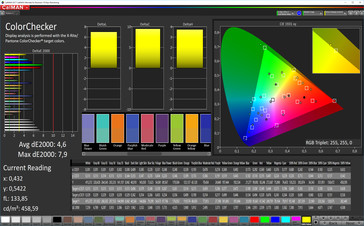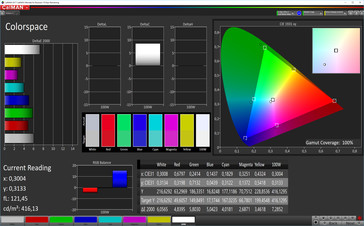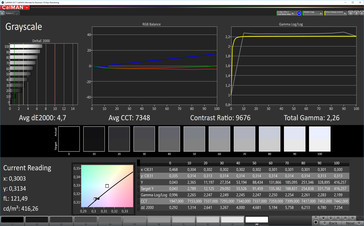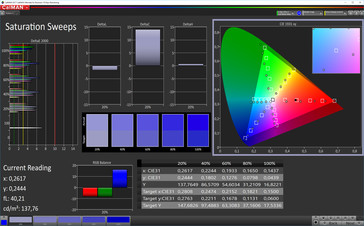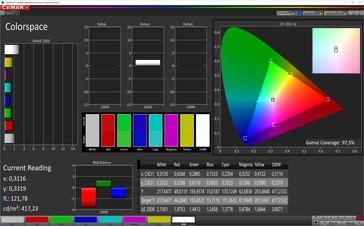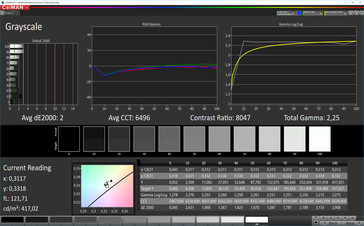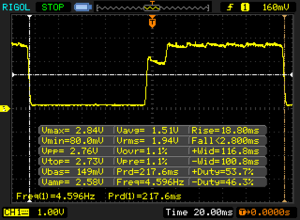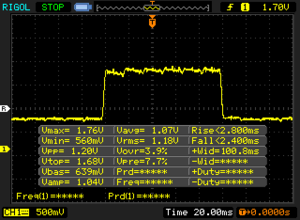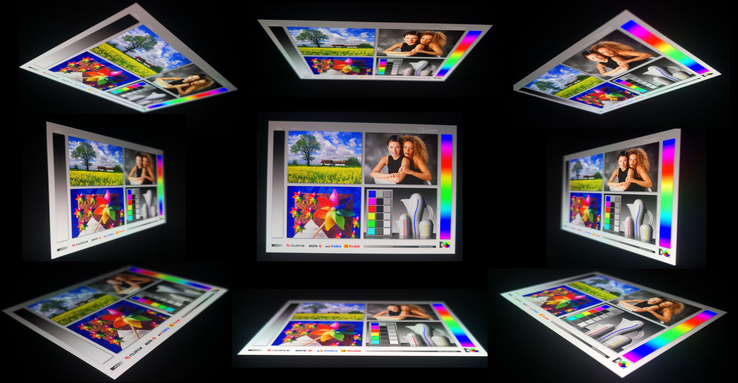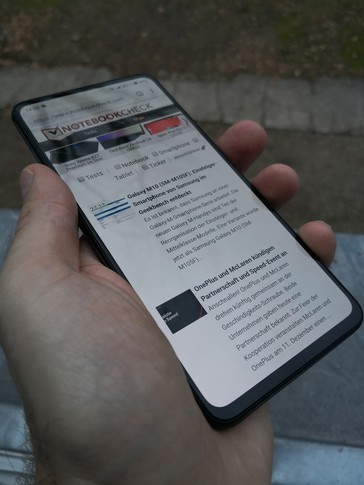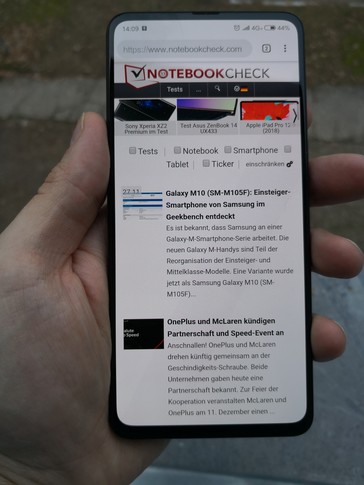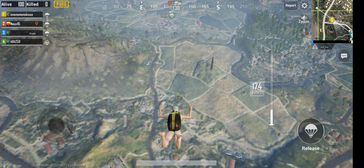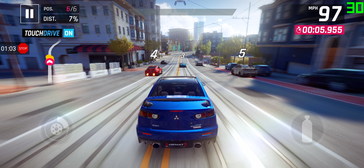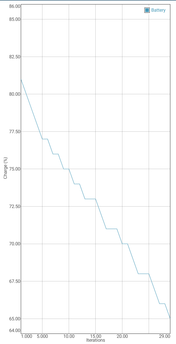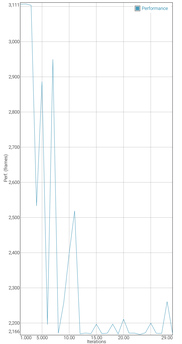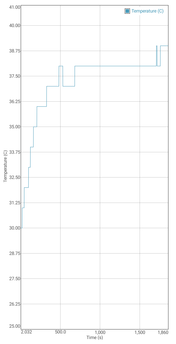Xiaomi Mi Mix 3 Smartphone Review
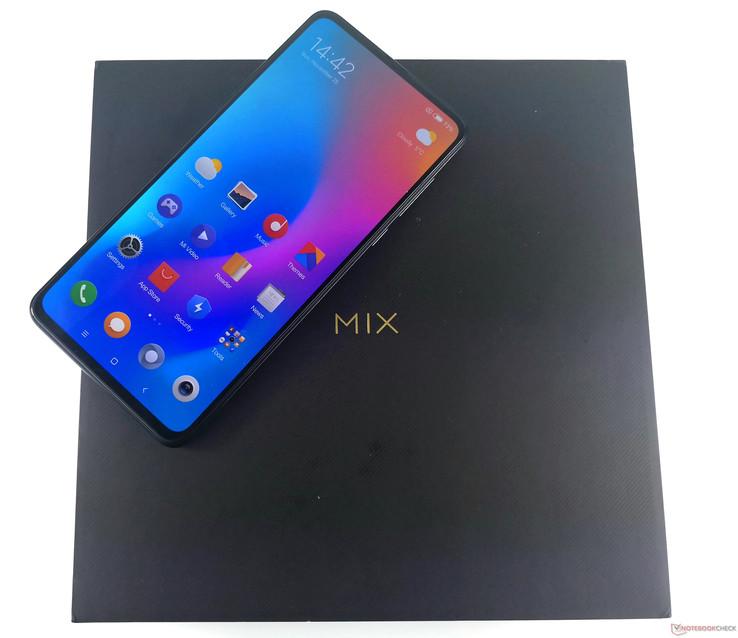
The Mi Mix series manufactured by Xiaomi has entered its fourth season. The successor of the smartphone that "revolutionized" smartphone designs in 2016 still looks impressive. It boasts an almost bezel-less AMOLED display without a notch. This is made possible by using a sliding mechanism that contains the dual front camera and several sensors. The panel comes from Samsung, which is well-known for its very good OLED displays.
The organic display in the Mi Mix 3 has a native resolution of 2340x1080 pixels in 19.5:9 format. The Xiaomi Mi Mix 3 is powered by Qualcomm's current high-end chipset Snapdragon 845, 10 GB of RAM and an Adreno 630. The back of the Xiaomi Mi Mix 3 has an active fingerprint sensor, a dual main camera with a resolution of 12 MP each and support for Qi charging, the wireless charging system via electromagnetic induction.
The top model of the Mi Mix 3 costs 4000 RMB (~$575) and has 256 GB of internal storage and 8 GB of RAM available. Our test unit is equipped with 128 GB of storage and 8 GB of RAM (3600 RMB/~$520). The entry-level configuration has 128 GB of UFS storage and 6 GB of RAM and is available for 3300 RMB (~$475). Officially, the company is not currently planning on distributing the device directly to the European market. Therefore, the only option of getting your hands on a Mi Mix 3 is via import companies. Due to the limited availability of the smartphone, prices might be a little higher. However, it is probable that a European version of the bezel-less Xiaomi smartphone will be available in December or at the beginning of the next year. Xiaomi will probably announce the availability of the device in other regions sometime in the future.
There will also be a Special Design edition, created in collaboration with the Palace Museum in Beijing. This should be available towards the end of 2018 and will come with 10 GB of RAM and an inlay depicting Xie Zhi on the back. This exclusive Palace Museum edition costs the equivalent of $700.
We have chosen the following high-range devices as comparison devices for today's review: OnePlus 6T and Xiaomi Mi 8 Explorer Edition and the top-range devices Sony Xperia XZ3, Samsung Galaxy S9 Plus, HTC U12 Plus and Huawei Mate 20 Pro. The almost bezel-less Oppo Find X and the Vivo Nex Ultimate can also be considered interesting competitors.
Case - Mi Mix 3 with sliding mechanism
The materials used for the Mi Mix series represent the philosophy Xiaomi has chosen for this series. Instead of using glass, the back of the Mi Mix 3 is made of ceramics and has rounded edges. The device is about 8 mm (~0.3 in) thick and lies comfortably in your hand. It is available in jade, sapphire and onyx. The Mi Mix 3 feels surprisingly heavy, weighing 218 grams (~7.7 oz). However, the weight distribution is good.
The case has good workmanship. Despite the mechanics, the smartphone has a strong build and cannot be warped. The gap between the case and the movable area of the display is minimal and the gap dimensions in general are even and smooth. The device does not have an IP certification against water or dust.
The front is made of scratch-resistant 2.5D Corning Gorilla glass that smoothly flows into the metal frame. The sides of the 6.39-inch OLED panel are very narrow. The same can be said for the area below the display. Unlike its predecessors, the cameras and sensors of the Mi Mix 3 are not positioned on the front. They disappear behind the display thanks to the slider mechanism, which means that the display covers a very large part of the front of the device (85%). The Oppo Find X has a screen-to-body ratio of 87%.
The dual camera module on the back is not flush with the device and the Mi Mix 3 wobbles when using it on a hard surface. The back of the device also features a fingerprint reader.
The physical buttons are easy to distinguish from one another, are worked into the case nicely and positioned well - at least the power button is. The volume rocker is a little too high for our fingers. The special feature of the Mi Mix 3 is placed on the left side of the case: An AI button for the language assistant similar to the one Samsung devices feature. Users can also change the function of the button to open the camera app instead.
Connectivity - Xiaomi smartphone with Qi standard
Typically for an OLED device, the Mi Mix 3 offers an Always On function for notifications. The device also has a status LED. The OTG adapter lets you connect external peripherals such as keyboards or USB sticks via the USB port. The device also supports the wireless transmission of display content to an external monitor via Miracast.
The internal UFS 2.1 storage of our test unit has a capacity of 128 GB, although users only have 110 GB of storage available after purchase. The Dual SIM smartphone does not offer a microSD card for storage expansion.
The 3200-mAh battery is recharged via a USB Type C port using the 2.0 standard positioned at the bottom of the device. The wireless Qi quick charge functionality recharges the device with up to 10 watts. The scope of delivery includes a suitable 10W Qi charging pad. The Mi Mix 3 only supports Widevine level 3, which means that videos, for example on Amazon or Netflix, can only be streamed at 540p.
Software - Android 9 with MiUI 10
As usual, Xiaomi has chosen to equip the Mi Mix 3 with Android and its own MiUI user interface. Our test unit has the Chinese ROM type (10.0.11.0 Stable) and Android security patches from October 2018. The operating system is based on the current Google Android version 9.0.
As Xiaomi is not yet selling the Mi Mix 3 outside of China, the MiUI does not support Google services such as the Play Store or Google apps such as Gmail. Instead, the device comes with Chinese services and Xiaomi's own apps. However, there are ways to install the PlayStore manually (luckily, the Mi Mix 3 already has Google Frameworks pre-installed, so that you only have to add the PlayStore itself) and (as is the case for almost every Xiaomi smartphone) we are expecting the announcement of a global version of the device that supports not only Google services but also offers languages other than Chinese and English.
The user interface of the Android operating system is very different to stock Android. The tenth version of the Mi user interface is still very colorful and offers a lot of customization options. Installed apps are not collected in an app drawer, but are distributed among the various home screens. The design can be changed using Xiaomi's own theme store.
Communication and GPS - fast Wi-Fi, precise GPS
Users can connect wireless peripherals such as headphones and smartwatches to the Xiaomi via Bluetooth 5.0. The device also supports near-field communication (NFC), which means it can be used for contactless payments.
The integrated Wi-Fi module supports the IEEE 802.11 standards a/b/g/n/ac. The Mi Mix 3 also has 2x2 MIMO technology for very high transfer rates. The rates measured with our test unit and our reference router Linksys EA 8500 are brilliant at over 600 MBit/s.
Reception is very good and the Wi-Fi signal is consistent during everyday use. We measured low attenuation of -38 dBm at close proximity to the router (Telekom Speedport, W921V). Users of the Xiaomi phone can insert up to two Nano-SIM cards simultaneously. The LTE smartphone downloads data at 1.2 GB/s on mobile internet (LTE cat 18, both slots).
The LTE module also has a MIMO antenna. The 4x4 MIMO technology doubles the Xiaomi smartphone's data transfer rate compared to 2x2 MIMO technology.
Like the Xiaomi Mi 8 (Explorer Edition), the Mi Mix 3 (only) supports 14 LTE bands. The frequency coverage is good for most carriers.
The device can use GPS, Galileo, QZSS, GLONASS, Beidou and the satellite-based augmentation system SBAS for positioning. Like the Mi 8 (Explorer Edition), the Mi Mix 3 has a Dual GPS feature which uses two frequency bands - the usual band L1 and the band L5 that is usually used for professional use - in order to ensure faster and more precise localization.
The Xiaomi smartphone positions itself reliably outdoors within about 4 meters (~13 ft). The satellite signal is weaker indoors, but the device still managed to locate us.
In order to get a better idea of the precision of our test unit, we took it on a ride together with the Garmin Edge 500. There are very few differences between the results of the Mi Mix 3 and those of the professional navigation system.
Telephone and Voice Quality - Xiaomi smartphone with VoLTE
The voice quality of the Mi Mix 3 is good. We could hear our call partner clearly and they also confirmed that our voice was transmitted nicely. We did not encounter any dropouts or problems with reception. The device supports VoLTE in theory, but this is currently limited to China Mobile. We assume that this will be expanded when the EU model appears. We were not able to choose this function using a Telekom SIM card.
The telephone app is the standard MiUI app. It offers a speed dial function, direct access to contacts saved to the phone and supports call lists.
Cameras - good dual cameras
Compared to the Mi 8, not much about the back camera of the Mi Mix 3 has changed, at least not on the hardware side. The dual main camera still has a wide-angle lens with 12 MP (4032x3024 pixels), an aperture of f/1.8 and an optical image stabilizer as well as a 12-MP telephoto lens with f/2.4. The Sony IMX363 image sensor in the main camera has a pixel size of 1.4 μm. The telephoto lens with low luminosity uses a Samsung sensor (S5K3M3) with significantly smaller pixels (1 μm).
The Chinese manufacturer has massively improved the Mi Mix 3's software and image processing capabilities. Particularly in low-light situations, the phone seems to be managing details, exposure and focus a lot better. The latter cannot be compared to flagship levels, however, and is a little imprecise sometimes, particularly when fast movements are involved.
Compared to the elite, the photos taken with our Mi Mix 3, particularly in bad lighting, are too dark and visibly lack details and sharpness. Colors also appear weak and washed-out.
Videos can be recorded at up to 60 FPS in UHD quality with the dual camera on the back of the Mix 3. There is a super-slow-motion function that records 960 frames per second. However, this "only" supports 1080p. The 4-axis OIS manages to balance out shaky hands while recording.
The dual selfie camera on the front has 24 and 2 MP. The Sony IMX576 main sensor is supported by an OmniVision OV02A10 image sensor for selfies. This worked well in our test and offered good results. The picture quality of the 24-MP camera module is good to very good. The aperture of f/2.2 does not let in a lot of light. Therefore, the device uses pixel binning (also used in the Redmi Note 6 Pro). This process combines four pixels into a "super pixel" with a pixel size of 1.8 μm and means that pictures can be quite light even in dark surroundings. The front camera records videos in FHD resolution (1920x1080 pixels) at up to 30 frames per second. The quality of videos is good for a front cam.
We further test the main camera under controlled lighting. The ColorChecker passport is used to analyze the color display of the 12-MP lens with the reference colors, which are depicted in the bottom half of each box.
The Mi Mix 3 does a good job at color reproduction - its only weakness seems to be black. Also, the white balance is a little too warm and shows a noticeable deviation compared to the reference colors.
The image sharpness of our test chart is decent. Color gradients are displayed nicely and text appears sharp on dark backgrounds. However, the image is less sharp and smooth at the edges.
Accessories and Warranty - wireless charging pad included
Apart from the Xiaomi smartphone itself, the scope of delivery includes a USB cable, a protective cover, a USB-Type-C-to-3.5-mm adapter and a modular CN power supply (2A, 9V). Xiaomi also includes a wireless charging pad ex-works.
TradingShenzhen has also included an EU adapter as well as a USB OTG adapter. Both of these items are not part of the standard scope of delivery.
The device comes with a 12-month warranty. Please see our Guarantees, Return policies and Warranties FAQ for country-specific information.
Input Devices & Handling
The device can be controlled either via on-screen buttons for "back", "multitasking" and "home" or via gesture control. The latter remains the same with Android 9 and MiUI 10. A quick swipe upwards from the bottom edge of the screen brings you to the home screen. If you leave the finger on the display after swiping upwards, you can access recently used applications. If you want to go a step back, swipe towards the center from left or right.
Xiaomi has chosen the Sogou keyboard as the standard keyboard app for MiUI. Users who do not like this keyboard can also download Google's stock app GBoard. Some spirited users might not be happy with the gap between the display and the case as the Xiaomi smartphone can rattle a little when using a lot of pressure while typing.
The capacitive touchscreen of the Mi Mix 3 is very sensitive and is still very precise in the corners. The surface has good gliding facilities. The fingerprint sensor is positioned on the back of the Xiaomi smartphone. It is one of the fastest sensors on the market and unlocks the high-end device reliably.
Users can also use their face to unlock the phone via biometric identification. The Face Unlock function of the front cam unlocks the Xiaomi smartphone quickly and reliably even in bad lighting.
Display - a great OLED panel
The 6.39-inch OLED display in the Mi Mix 3 has a resolution of 2340x1080 pixels which equates to a pixel density of 400 PPI. This positions the Xiaomi on par with most of our comparison with FHD resolution. The 1080p resolution is sufficiently sharp during everyday use. However, the high-end segment also includes phones such as the Huawei Mate 20 Pro, the HTC U12 Plus and the Samsung Galaxy S9 Plus that offer 1440p resolutions. Small writing appears even more sharp on these devices.
As organic light diodes hardly ever shine at their theoretical maximum brightness, the brightness of each diode is reduced accordingly. Xiaomi uses pulse-width modulation to control display brightness. This occurs even at maximum brightness. The frequency of this flickering is rather low, at 240 Hz. Subjectively, we did not notice this. However, PWM can affect sensitive users by giving them headaches or making them feel dizzy, particularly at very low frequencies.
The maximum brightness on an all-white screen is 421 cd/m². If the ambient light sensor is turned on to automatically adjust display brightness, the maximum is significantly higher at 599 cd/m². We also tested the luminosity of the panel with evenly distributed light and dark areas (APL50). This resulted in a maximum brightness of 799 cd/m².
| |||||||||||||||||||||||||
Brightness Distribution: 96 %
Center on Battery: 599 cd/m²
Contrast: ∞:1 (Black: 0 cd/m²)
ΔE ColorChecker Calman: 1.4 | ∀{0.5-29.43 Ø4.77}
ΔE Greyscale Calman: 2 | ∀{0.09-98 Ø5}
97.5% sRGB (Calman 2D)
Gamma: 2.25
CCT: 6496 K
| Xiaomi Mi Mix 3 OLED, 2340x1080, 6.4" | Xiaomi Mi 8 Explorer Edition Super AMOLED, 2248x1080, 6.2" | Oppo Find X AMOLED, 2340x1080, 6.4" | Vivo Nex Ultimate Super AMOLED, 2316x1080, 6.6" | OnePlus 6T Optic AMOLED, 2340x1080, 6.4" | Samsung Galaxy S9 Plus Super AMOLED, 2960x1440, 6.2" | HTC U12 Plus Super LCD 6, 2880x1440, 6" | Huawei Mate 20 Pro OLED, 3120x1440, 6.3" | |
|---|---|---|---|---|---|---|---|---|
| Screen | -56% | -97% | -161% | -25% | -20% | -8% | 1% | |
| Brightness middle (cd/m²) | 599 | 429 -28% | 427 -29% | 356 -41% | 437 -27% | 565 -6% | 395 -34% | 576 -4% |
| Brightness (cd/m²) | 593 | 432 -27% | 432 -27% | 352 -41% | 442 -25% | 571 -4% | 402 -32% | 582 -2% |
| Brightness Distribution (%) | 96 | 88 -8% | 87 -9% | 95 -1% | 95 -1% | 96 0% | 90 -6% | 90 -6% |
| Black Level * (cd/m²) | 0.37 | |||||||
| Colorchecker dE 2000 * | 1.4 | 3.39 -142% | 5.37 -284% | 7.08 -406% | 2.21 -58% | 2.3 -64% | 1.6 -14% | 1.3 7% |
| Colorchecker dE 2000 max. * | 3.2 | 5.25 -64% | 7.51 -135% | 14.1 -341% | 4.27 -33% | 4.8 -50% | 3.4 -6% | 3.5 -9% |
| Greyscale dE 2000 * | 2 | 3.3 -65% | 4 -100% | 4.7 -135% | 2.1 -5% | 1.9 5% | 1.1 45% | 1.6 20% |
| Gamma | 2.25 98% | 2.238 98% | 2.243 98% | 2.096 105% | 2.307 95% | 2.16 102% | 2.14 103% | 2.18 101% |
| CCT | 6496 100% | 7135 91% | 6851 95% | 7297 89% | 6353 102% | 6332 103% | 6536 99% | 6561 99% |
| Contrast (:1) | 1068 |
* ... smaller is better
Screen Flickering / PWM (Pulse-Width Modulation)
| Screen flickering / PWM detected | 240.4 Hz | ||
The display backlight flickers at 240.4 Hz (worst case, e.g., utilizing PWM) . The frequency of 240.4 Hz is relatively low, so sensitive users will likely notice flickering and experience eyestrain at the stated brightness setting and below. In comparison: 53 % of all tested devices do not use PWM to dim the display. If PWM was detected, an average of 8081 (minimum: 5 - maximum: 343500) Hz was measured. | |||
Due to their technology, OLED displays have a significant advantage over liquid crystal displays. Organic panels can display "absolute" black even in pitch-black rooms and at maximum brightness. Therefore, their contrast ratio is theoretically infinite. Even high-quality IPS displays illuminate black areas with about half a thousandth of the LED backlight diode.
An analysis of the screen using the spectrophotometer and CalMAN software results in very low average DeltaE deviations to the sRGB color space of 1.4 for colors and 2 for gray scales (profile: standard). The ideal range is below 3. The segment of bezel-less smartphones, which consists of the Oppo Find X and the Vivo Nex Ultimate, cannot keep up with these values. The Mi Mix 3 also does a very good job at color temperature with 6496 K, compared to an ideal of 6500 K.
The sRGB and P3 color space is covered almost entirely by the OLED panel. We did not notice a color cast.
Display Response Times
| ↔ Response Time Black to White | ||
|---|---|---|
| 12.2 ms ... rise ↗ and fall ↘ combined | ↗ 9.4 ms rise | |
| ↘ 2.8 ms fall | ||
| The screen shows good response rates in our tests, but may be too slow for competitive gamers. In comparison, all tested devices range from 0.1 (minimum) to 240 (maximum) ms. » 32 % of all devices are better. This means that the measured response time is better than the average of all tested devices (20.2 ms). | ||
| ↔ Response Time 50% Grey to 80% Grey | ||
| 7.6 ms ... rise ↗ and fall ↘ combined | ↗ 2.8 ms rise | |
| ↘ 4.8 ms fall | ||
| The screen shows very fast response rates in our tests and should be very well suited for fast-paced gaming. In comparison, all tested devices range from 0.165 (minimum) to 636 (maximum) ms. » 19 % of all devices are better. This means that the measured response time is better than the average of all tested devices (31.6 ms). | ||
Performance - Snapdragon 845 ensures good system performance
Our high-end Xiaomi smartphone is equipped with the Snapdragon 845, which supplies it with plenty of power. The 2018 Qualcomm chip has four ARM Cortex A75 performance cores with a clock rate of up to 2.8 GHz and four more energy-efficient cores. These are based on ARM Cortex A55 architecture and clock at up to 1.8 GHz. The graphics chip included in the Qualcomm SoC is the powerful Adreno 630.
Together with 8 GB of RAM this high-end processor ensures a very good system performance. The apps are very quick to load and animations are smooth. The Mi Mix 3 is on the top of the list in our benchmarks - particularly the PCMark system benchmarks make the slider phone look good.
The Xiaomi also does a good job in our web-based benchmarks. Subjectively, we were very happy with the browser performance using Chrome with pages loading very quickly.
| JetStream 1.1 - Total Score | |
| Huawei Mate 20 Pro (Chrome 69) | |
| HTC U12 Plus (Chrome 66) | |
| OnePlus 6T (Chrome 70) | |
| Xiaomi Mi Mix 3 (Chrome 70) | |
| Xiaomi Mi 8 Explorer Edition (Chrome 69) | |
| Average Qualcomm Snapdragon 845 (22.5 - 90.9, n=25) | |
| Samsung Galaxy S9 Plus (Samsung Browser 7.0) | |
| Oppo Find X (Chrome 69) | |
| Vivo Nex Ultimate (Chrome 67) | |
| Octane V2 - Total Score | |
| Average of class Smartphone (2228 - 126661, n=194, last 2 years) | |
| Huawei Mate 20 Pro (Chrome 69) | |
| OnePlus 6T (Chrome 70) | |
| Xiaomi Mi Mix 3 (Chrome 70) | |
| HTC U12 Plus (Chrome 66) | |
| Average Qualcomm Snapdragon 845 (3991 - 18275, n=28) | |
| Samsung Galaxy S9 Plus (Samsung Browser 7.0) | |
| Xiaomi Mi 8 Explorer Edition (Chrome 69) | |
| Oppo Find X (Chrome 69) | |
| Vivo Nex Ultimate (Chrome 67) | |
| Mozilla Kraken 1.1 - Total | |
| Vivo Nex Ultimate (Chrome 67) | |
| Oppo Find X (Chrome 69) | |
| Average Qualcomm Snapdragon 845 (2154 - 11204, n=28) | |
| HTC U12 Plus (Chrome 66) | |
| Xiaomi Mi 8 Explorer Edition (Chrome 69) | |
| Xiaomi Mi Mix 3 (Chrome 70) | |
| OnePlus 6T (Chrome 70) | |
| Samsung Galaxy S9 Plus (Samsung Browser 7.0) | |
| Huawei Mate 20 Pro (Chrome 69) | |
| Average of class Smartphone (257 - 28190, n=154, last 2 years) | |
| WebXPRT 3 - Overall | |
| Average of class Smartphone (38 - 380, n=30, last 2 years) | |
| Huawei Mate 20 Pro (Chrome 69) | |
| HTC U12 Plus (Chrome 66) | |
| Xiaomi Mi Mix 3 (Chrome 70) | |
| Average Qualcomm Snapdragon 845 (19 - 103, n=17) | |
| Samsung Galaxy S9 Plus | |
| Vivo Nex Ultimate (Stock Browser) | |
| WebXPRT 2015 - Overall | |
| Huawei Mate 20 Pro (Chrome 69) | |
| OnePlus 6T (Chrome 70) | |
| Xiaomi Mi Mix 3 (Chrome 70) | |
| HTC U12 Plus (Chrome 66) | |
| Xiaomi Mi 8 Explorer Edition (Chrome 69) | |
| Average Qualcomm Snapdragon 845 (96 - 291, n=23) | |
| Samsung Galaxy S9 Plus (Samsung Browser 7.0) | |
| Vivo Nex Ultimate (Chrome 67) | |
* ... smaller is better
The modern UFS 2.1 flash storage also plays an important part in how quickly apps can be opened and closed. The Mi Mix 3 has one of the fastest storage devices available in the smartphone world - although current flagship smartphones such as the Huawei Mate 20 Pro and the HTC U12 Plus have higher access rates.
| Xiaomi Mi Mix 3 | Xiaomi Mi 8 Explorer Edition | Oppo Find X | Vivo Nex Ultimate | OnePlus 6T | Samsung Galaxy S9 Plus | HTC U12 Plus | Huawei Mate 20 Pro | Average 128 GB UFS 2.1 Flash | Average of class Smartphone | |
|---|---|---|---|---|---|---|---|---|---|---|
| AndroBench 3-5 | 5% | 15% | 5% | 6% | 8% | 106% | 187% | 160% | 704% | |
| Sequential Read 256KB (MB/s) | 675 | 692 3% | 761 13% | 687 2% | 735 9% | 819 21% | 709 5% | 853 26% | 761 ? 13% | 2235 ? 231% |
| Sequential Write 256KB (MB/s) | 206.8 | 205.2 -1% | 206.9 0% | 228.4 10% | 204.4 -1% | 204.9 -1% | 195.8 -5% | 196.4 -5% | 296 ? 43% | 1871 ? 805% |
| Random Read 4KB (MB/s) | 133.2 | 135.2 2% | 145.9 10% | 126.7 -5% | 138.5 4% | 129.7 -3% | 118.1 -11% | 157.4 18% | 154 ? 16% | 297 ? 123% |
| Random Write 4KB (MB/s) | 19.54 | 22.65 16% | 26.98 38% | 22.1 13% | 22 13% | 22.74 16% | 104.2 433% | 157.8 708% | 130.4 ? 567% | 343 ? 1655% |
Games - Adreno 630 offers unlimited gaming
The Qualcomm Adreno 630 supports all modern APIs such as Vulkan, OpenGL ES 3.2 and DirectX 12. The GPU is manufactured in the 10-nm process and is one of the most performant GPUs in the smartphone segment.
The 3D performance of the Mi Mix 3 is put through its paces with a few demanding games from the PlayStore. We make a protocol of frame rates during these gaming sessions using the GameBench app.
Graphically-demanding games such as "Asphalt 9 Legends" are displayed at a consistent 30 FPS at maximum settings. Modern and demanding games such as "PUBG Mobile" can also be displayed smoothly at 40 FPS. We did not encounter any drops in the frame rate even at maximum graphics settings.
The sensors in the Xiaomi smartphone and its capacitive touchscreen respond very well to inputs while gaming. We would like to mention the slight looseness of the display in the case. If you hold the device in landscape mode, the slider can be moved up and down by about one millimeter at the sides.
PUBG Mobile
Asphalt 9 Legends
Emissions - low temperatures
Temperature
The ceramic back of the Mi Mix 3 hardly heats up under permanent load. While we measured an average temperature of around 26 °C (~79 °F) while idling, the back reaches a maximum surface temperature of 31.1 °C (~88 °F) under load. The heat development on the front is stronger. Still, heat development is no issue in everyday use, even when running more demanding applications.
We used the battery test of the GFXBench app to analyze the heat development of the Qualcomm SoC under continuous load. During this test, the scenarios are repeated in a loop for thirty times and the battery level and frame rate is documented.
The Mi Mix 3 throttles during the demanding Manhattan test (OpenGL ES 3.1). The GFXBench battery test shows that with increasing load, the frame rate drops after 10 runs. The fluctuations in the frame rate are within a third of the Mi Mix 3's maximum performance. This means that there can be drops in performance during continuous load, but that this should not impact everyday performance very much.
(+) The maximum temperature on the upper side is 32 °C / 90 F, compared to the average of 35.2 °C / 95 F, ranging from 21.9 to 247 °C for the class Smartphone.
(+) The bottom heats up to a maximum of 31.1 °C / 88 F, compared to the average of 34 °C / 93 F
(+) In idle usage, the average temperature for the upper side is 26.5 °C / 80 F, compared to the device average of 32.9 °C / 91 F.
Speakers
The Mi Mix 3 has a mono speaker that is positioned along the bottom of the device. However, the build creates some stereo effects as sound is also emitted from the top of the device.
While mids are comparatively linear, highs are underrepresented. Our Pink Noise measurement shows that bass tones are also expectedly quiet. Most low and bass tones are not audible on this smartphone speaker. The maximum volume is sufficient at 85 dB(A).
The audio output via the USB C port is loud and of good quality as is typical for Xiaomi. The settings menu offers an equalizer and MI sound optimization.
Xiaomi Mi Mix 3 audio analysis
(+) | speakers can play relatively loud (84.8 dB)
Bass 100 - 315 Hz
(-) | nearly no bass - on average 27.4% lower than median
(±) | linearity of bass is average (10.7% delta to prev. frequency)
Mids 400 - 2000 Hz
(+) | balanced mids - only 3.2% away from median
(+) | mids are linear (4.5% delta to prev. frequency)
Highs 2 - 16 kHz
(±) | higher highs - on average 7.4% higher than median
(+) | highs are linear (4.3% delta to prev. frequency)
Overall 100 - 16.000 Hz
(±) | linearity of overall sound is average (21.7% difference to median)
Compared to same class
» 43% of all tested devices in this class were better, 8% similar, 49% worse
» The best had a delta of 11%, average was 35%, worst was 134%
Compared to all devices tested
» 61% of all tested devices were better, 7% similar, 32% worse
» The best had a delta of 4%, average was 24%, worst was 134%
OnePlus 6T audio analysis
(±) | speaker loudness is average but good (80.5 dB)
Bass 100 - 315 Hz
(-) | nearly no bass - on average 62.9% lower than median
(+) | bass is linear (0% delta to prev. frequency)
Mids 400 - 2000 Hz
(-) | nearly no mids - on average 62.9% lower than median
(+) | mids are linear (0% delta to prev. frequency)
Highs 2 - 16 kHz
(-) | nearly no highs - on average 62.9% lower than median
(+) | highs are linear (0% delta to prev. frequency)
Overall 100 - 16.000 Hz
(-) | overall sound is not linear (116.1% difference to median)
Compared to same class
» 87% of all tested devices in this class were better, 5% similar, 8% worse
» The best had a delta of 11%, average was 35%, worst was 134%
Compared to all devices tested
» 96% of all tested devices were better, 1% similar, 3% worse
» The best had a delta of 4%, average was 24%, worst was 134%
Battery Runtime - small battery, good runtimes
Power Consumption
Compared to the Mi 8 (Explorer Edition), the Chinese manufacturer has made noticeable improvements to the energy management. The efficient power consumption of the Mi Mix 3 is noticeable particularly while idling. On average, the Xiaomi smartphone is about 80% below the Snapdragon 845 competition.
We would like to mention that the energy saving settings from Xiaomi are quite restrictive in some areas and that users will probably need to deactivate or adapt these.
| Off / Standby | |
| Idle | |
| Load |
|
Key:
min: | |
| Xiaomi Mi Mix 3 3200 mAh | Xiaomi Mi 8 Explorer Edition 3000 mAh | Oppo Find X 3730 mAh | Vivo Nex Ultimate 4000 mAh | OnePlus 6T 3700 mAh | Samsung Galaxy S9 Plus 3500 mAh | HTC U12 Plus 3500 mAh | Huawei Mate 20 Pro 4200 mAh | Average Qualcomm Snapdragon 845 | Average of class Smartphone | |
|---|---|---|---|---|---|---|---|---|---|---|
| Power Consumption | -192% | -130% | -57% | -51% | -18% | -104% | -94% | -82% | -78% | |
| Idle Minimum * (Watt) | 0.49 | 1.8 -267% | 0.9 -84% | 0.9 -84% | 0.7 -43% | 0.68 -39% | 0.77 -57% | 0.95 -94% | 0.862 ? -76% | 0.847 ? -73% |
| Idle Average * (Watt) | 0.67 | 2.9 -333% | 1.9 -184% | 1.5 -124% | 1.1 -64% | 0.95 -42% | 2.18 -225% | 2.17 -224% | 1.728 ? -158% | 1.446 ? -116% |
| Idle Maximum * (Watt) | 0.87 | 3.5 -302% | 3.2 -268% | 1.7 -95% | 2.1 -141% | 1.09 -25% | 2.21 -154% | 2.25 -159% | 2.07 ? -138% | 1.63 ? -87% |
| Load Average * (Watt) | 3.64 | 4.8 -32% | 7.1 -95% | 3.7 -2% | 4.2 -15% | 4.58 -26% | 6.25 -72% | 4.47 -23% | 4.87 ? -34% | 6.95 ? -91% |
| Load Maximum * (Watt) | 9.04 | 11.2 -24% | 10.7 -18% | 7.2 20% | 8.3 8% | 5.16 43% | 10.16 -12% | 6.15 32% | 9.27 ? -3% | 11.3 ? -25% |
* ... smaller is better
Battery Runtime
The battery in the Mi Mix 3 is only 3200 mAh large and not particularly generous for a 6.4-inch smartphone. However, it is impressive to see what Xiaomi can get out of this battery. While the runtimes are still shorter than some of the competition's, the Mi Mix 3 still managed a good 12 hours during our Wi-Fi battery test with 150 cd/m² brightness. The Mi Mix 3 even manages 14 hours of video playback.
Thanks to QuickCharge technology, the Mi Mix 3 recharges in about 1.5 hours with any 18-watt power supply. The 10-watt wireless charging pad takes only about 30 minutes longer to recharge the phone to 100%. This is not bad at all.
| Xiaomi Mi Mix 3 3200 mAh | Xiaomi Mi 8 Explorer Edition 3000 mAh | Oppo Find X 3730 mAh | Vivo Nex Ultimate 4000 mAh | OnePlus 6T 3700 mAh | Samsung Galaxy S9 Plus 3500 mAh | HTC U12 Plus 3500 mAh | Huawei Mate 20 Pro 4200 mAh | |
|---|---|---|---|---|---|---|---|---|
| Battery runtime | -4% | -17% | 23% | 19% | -12% | -19% | 13% | |
| Reader / Idle (h) | 30.2 | 23.4 -23% | 32.1 6% | 32.3 7% | 22.4 -26% | 24.2 -20% | 29.1 -4% | |
| H.264 (h) | 13.9 | 15.4 11% | 18.9 36% | 15.1 9% | 11.2 -19% | 7.7 -45% | 14.2 2% | |
| WiFi v1.3 (h) | 12 | 11.6 -3% | 9.9 -17% | 17.1 43% | 14.4 20% | 8.7 -27% | 8.5 -29% | 12.8 7% |
| Load (h) | 3.2 | 3.2 0% | 3.4 6% | 4.4 38% | 4 25% | 3.8 19% | 4.7 47% |
Pros
Cons
Verdict - Excellent slider phone
The Mi Mix 3 is a very good bezel-less smartphone that manages without a display notch. The display in particular is another step up from the Mi 8. The display technology used by Xiaomi is excellent.
We were surprised by the good performance of the relatively small battery in the slider smartphone. Our battery test shows that the Mi Mix 3 can offer good runtimes thanks to its very good power consumption rates. Most users should easily get through a day with one battery load.
The Mi Mix is a very nice smartphone that might not be an ideal travel companion for everyone due to its sliding mechanism.
The Mi Mix 3 from Xiaomi does not have a lot of weaknesses. Due to the sliding mechanics, the high-end smartphone does not have any IP certification, is rather heavy and is probably more prone to breakages than a "normal" smartphone with a monobloc body.
Xiaomi Mi Mix 3
- 12/03/2018 v6 (old)
Marcus Herbrich

















